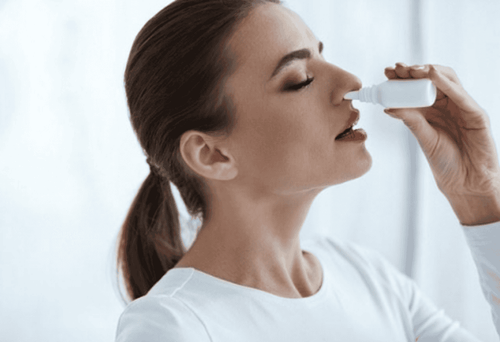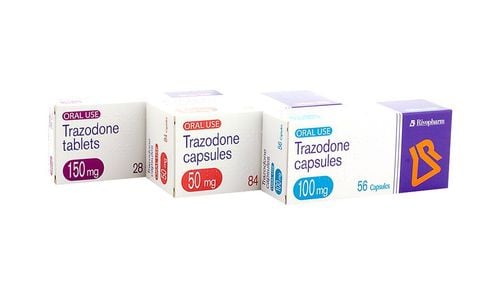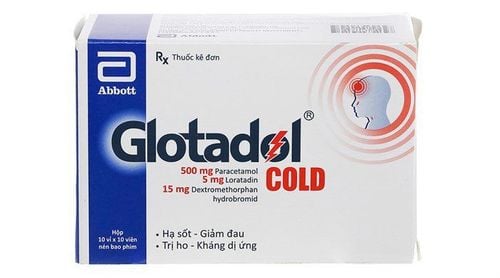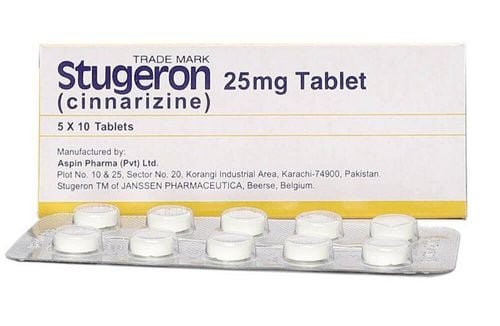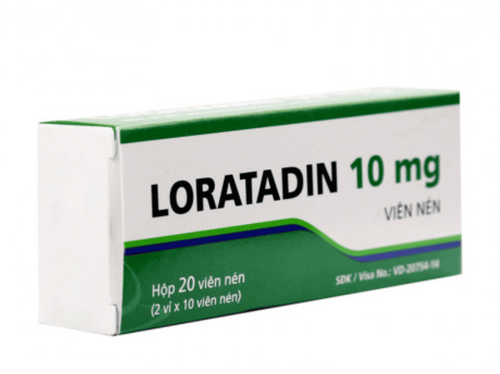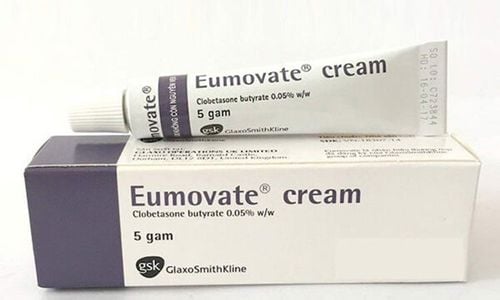This is an automatically translated article.
Doxylamine is a type of H1 antihistamine, effective in the treatment of many diseases such as runny nose, watery eyes, urticaria... So what is the ingredient in doxylamine to help this drug have many uses such as: so. The following article will help readers get more useful information.
1. What is Doxylamine?
Doxylamine is a first generation H1 antihistamine with sedative and sedating effects. Doxylamine is available in tablet form. The drug composition doxylamine contains the main active ingredient is doxylamine succinate with a concentration of 25 mg and other excipients.
2. Pharmacology and mechanism of action of doxylamine.
The mechanism of action of doxylamine is a reversible competitive antagonism with histamine at the H1 receptor, thereby reducing or eliminating the effects of histamine on target cells. The drug doxylamine does not affect H2 receptors, so it does not cause a decrease in gastric acid secretion. Doxylamine acts on histamine receptors on smooth muscle of the digestive system, uterus, trachea, large blood vessels. In addition, doxylamine has the effect of antagonizing the effect of increasing capillary permeability and causing edema of histamine.
3. Pharmacokinetics of doxylamine
Absorption: Peak plasma concentrations of about 100 nanograms/ml are reached within 2 - 3 hours after taking a 25 mg doxylamine tablet. The sedative effect appears about 30 minutes after taking doxylamine. The half-life is about 10 hours in healthy subjects.
4. Indications and contraindications to the drug doxylamine
4.1. Indications Doxylamine is indicated for the treatment of allergic rhinitis and other allergic symptoms caused by increased histamine release in the skin such as atopic dermatitis, urticaria, contact dermatitis and eye allergies such as allergic conjunctivitis. . Support short-term treatment of insomnia. Combined with other drugs in the treatment of cold symptoms such as runny nose, sneezing,... 4.2. Contraindications Do not use Doxylamine in case the patient is hypersensitive to doxylamine or to any of its ingredients. Doxylamine should not be given to children under 6 years of age.
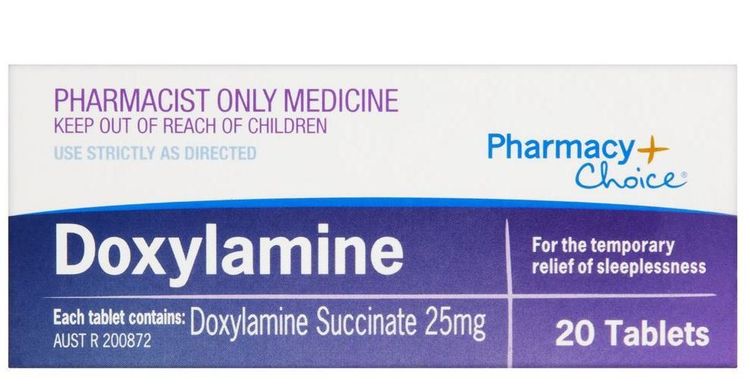
Doxylamine là thuốc kháng Histamin thế hệ H1 có công dụng an thần
5. Caution
Due to the inhibitory effect on the central nervous system, doxylamine can cause drowsiness, so do not operate machinery, drive a car, ... after taking the drug. The CNS depressant effect is increased when used with alcoholic beverages..
In some people, especially children, doxylamine may cause paradoxical stimulant effects including restlessness. , insomnia, muscle tremors, nervousness, even convulsions. At the same time, doxylamine may also increase the risk of seizures in patients with cortical lesions and should be used with caution in patients with epilepsy.
There are no data on the safety and effectiveness of doxylamine in the treatment of insomnia in children under 12 years of age. In addition, according to reports, a higher proportion of children taking antihistamines tend to experience paradoxical CNS stimulants than adults. Therefore, when using drugs for children, it is necessary to have close supervision of medical staff.
Overdose and poisoning (including death) in children under 2 years of age when taking preparations containing antihistamines (including doxylamine), cough suppressants, expectorants, and nasal decongestants alone or in combination for the treatment of symptoms of upper respiratory tract infections have been reported. Evidence on the efficacy and safety of doxylamine in children under 6 years of age is inadequate, so over-the-counter preparations containing doxylamine should not be used to treat coughs and colds in children under 6 years of age.
Doxylamine should be used with caution in patients with narrow-angle glaucoma, prostatic hypertrophy, pyloric stenosis, bladder neck obstruction.
Currently, the teratogenicity of doxylamine has not been clarified. Therefore, when using doxylamine in pregnant women, the benefits and risks need to be weighed.
However, doxylamine can pass into breast milk and affect the baby, and at the same time affect the ability to produce milk. Experts recommend not taking this drug to women who are breast-feeding. When necessary, consider discontinuing breast-feeding or discontinuing doxylamine.
6. Undesirable effects
Similar to other 1st generation H1 antihistamines, the common undesirable effects of doxylamine are:
Central nervous system depression with the range of drowsiness to deep sleep, Fatigue, dizziness, Loss of coordination, Headache, Psychomotor impairment, Antimuscarinic effects (such as dry mouth, decreased secretions, blurred vision, difficulty urinating, constipation, increased gastric acid reflux, .. ). Uncommon side effects, occurring at high doses, in children or the elderly such as nausea, vomiting, diarrhea, epigastric pain, paradoxical nerve excitability.
7. Dosage and usage
7.1. Dosage Doxylamine is taken orally.
7.2. Dosage For allergic conditions and in combination with other drugs to treat cold symptoms:
Adults and children over 12 years: 7.5 - 12.5 mg/time, every 4 up to 6 hours, up to 75 mg/day. If the dose is from 12.5 to 25 g/time, it should be closely monitored by medical staff but not to exceed 150 mg/day. Children from 6 to 12 years old: half the adult dose. In the short-term treatment of insomnia, adults and children over 12 years of age take doxylamine at a dose of 25 mg 30 minutes before bedtime. However, if insomnia persists for more than two weeks, you should see your doctor for prompt treatment.

Người bệnh nên dùng thuốc Doxylamine theo chỉ định của bác sĩ
8. Drug interactions
Doxylamine drugs when combined with some drugs may interact or reduce the side effects of the drug. Specifically:
Drugs doxylamine have a synergistic effect and increase CNS depressant toxicity when combined with other CNS depressants such as barbiturates, benzodiazepines, opioid analgesics, antipsychotic drugs, alcohol. Therefore, caution should be exercised when co-administering doxylamine with CNS depressants to avoid overdose, causing many undesirable effects. During the use of the drug, avoid alcoholic beverages. Doxylamine drugs when used concurrently with antimuscarinic drugs can cause synergistic central and peripheral antimuscarinic effects, increasing the undesirable effects of the drug. Concomitant administration of doxylamine with MAO inhibitors and clozapine may potentiate the antimuscarinic effect. In contrast, when combining doxylamine with oral contraceptives, there are some cases of loss of contraceptive effect. Betahistine antagonizes the action of doxylamine.
Please dial HOTLINE for more information or register for an appointment HERE. Download MyVinmec app to make appointments faster and to manage your bookings easily.




